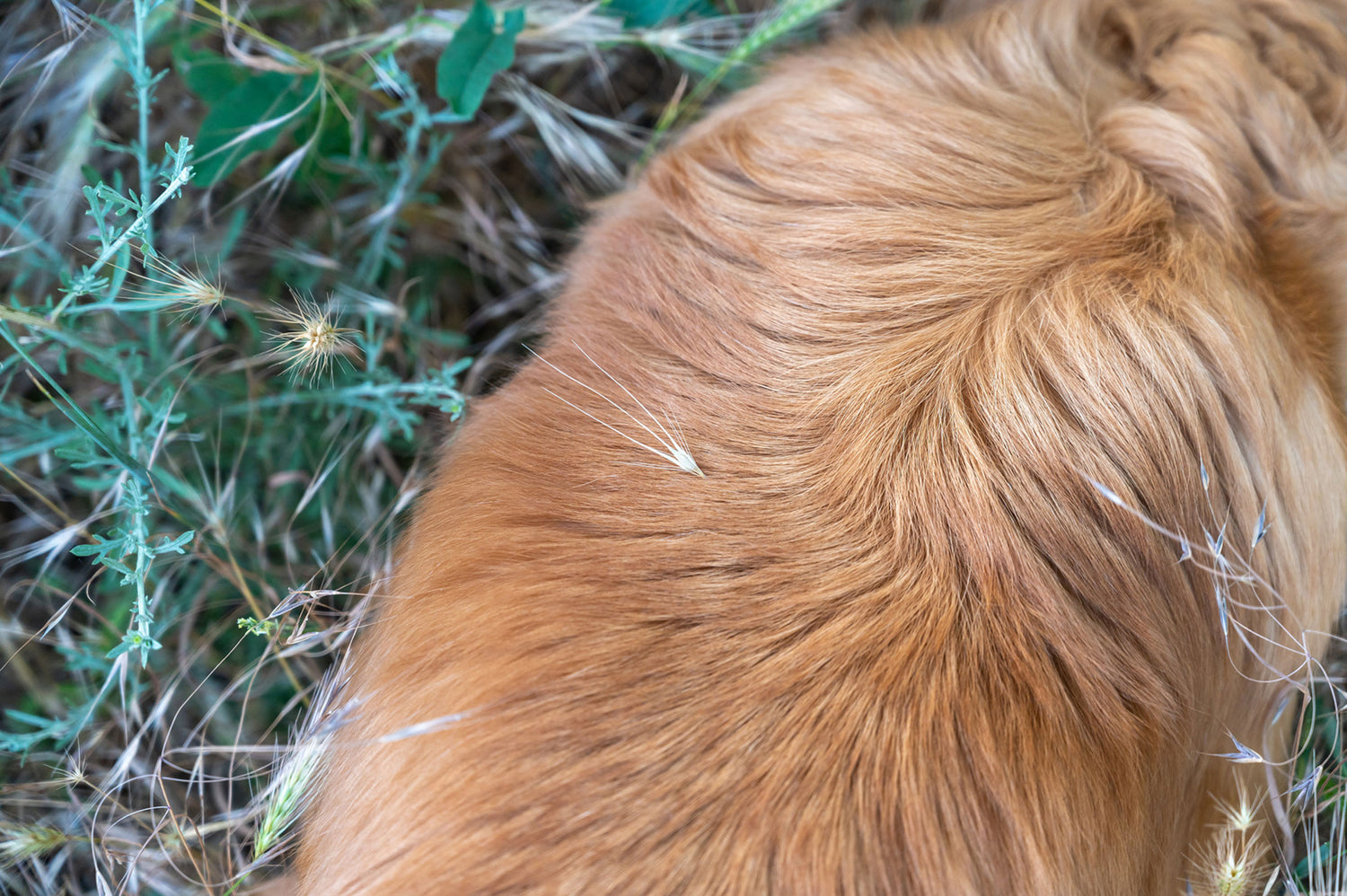As the summer heat rolls in and we eagerly step outside to enjoy the sunshine, it's crucial for dog owners to be aware of a hidden danger that can cause significant harm to our beloved pets: foxtails. These seemingly innocuous spikes of grass carry serious risks for dogs, and understanding these risks can help prevent unnecessary pain and vet visits.
What are Foxtails?
Foxtails are the barbed seed heads of certain grassy plants, commonly found in open fields, along roadsides, and in many unkempt outdoor spaces during the warmer months. Their sharp, pointed shape allows them to burrow into the ground to plant the next generation of plants. However, these same traits make foxtails a hazard to animals and people.
Why are Foxtails Dangerous to Dogs?
The unique structure of a foxtail means that it can easily become embedded in a dog’s fur and, worse, migrate inward. These seeds can drill into a dog's skin and travel through the body, causing severe infections, abscesses, and other critical health issues. Common points of entry include:
- Ears: Dogs with floppy ears are particularly vulnerable as foxtails can go unnoticed until they cause severe irritation, infection, or even temporary deafness.
- Eyes: Foxtails can scratch the cornea, leading to painful infections and, in severe cases, blindness.
- Nose: Sniffing near foxtail plants can lead to inhalation, causing intense sneezing, nasal discharge, and in extreme cases, a need for surgical removal.
- Paws: Foxtails can lodge between toes or pierce the foot pads, leading to limping, swelling, and infections that may require surgical intervention.
Prevention Tips
- Keep Your Yard Trimmed: Regularly maintaining your lawn and removing high-risk plants can drastically reduce the risk of foxtail injuries.
- Choose Your Walks Wisely: Avoid walking your dog in areas where you know foxtails are common. Stick to well-maintained paths or parks.
- Inspect Your Dog Regularly: After walks, thoroughly check your dog's coat, especially around the ears, eyes, between the toes, and under the belly.
- Groom Regularly: If your dog has a long coat, consider keeping it trimmed during the foxtail season to minimize the risk of seeds catching in their fur.
What to Do If You Suspect a Foxtail Has Embedded Itself?
If your dog is showing signs of discomfort such as shaking its head, pawing at its face, incessant licking of a spot, or sudden sneezing fits, it’s critical to act quickly:
- Inspect the Area: If you see a foxtail and can easily grasp it with tweezers, gently remove it. However, be cautious as breaking it may lead to further complications.
- Visit the Vet: If you suspect a foxtail has embedded itself where you can’t see it, or if the area seems infected, visit your vet immediately. Foxtails left inside a dog can migrate, making them harder to remove and increasing the risk of serious infections.



